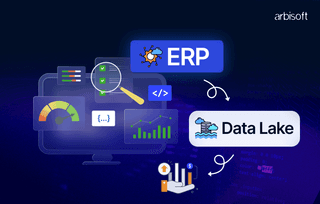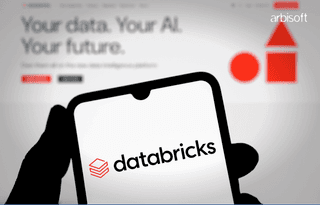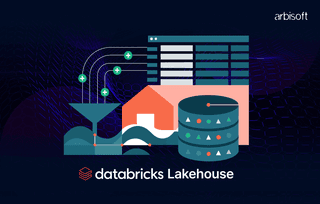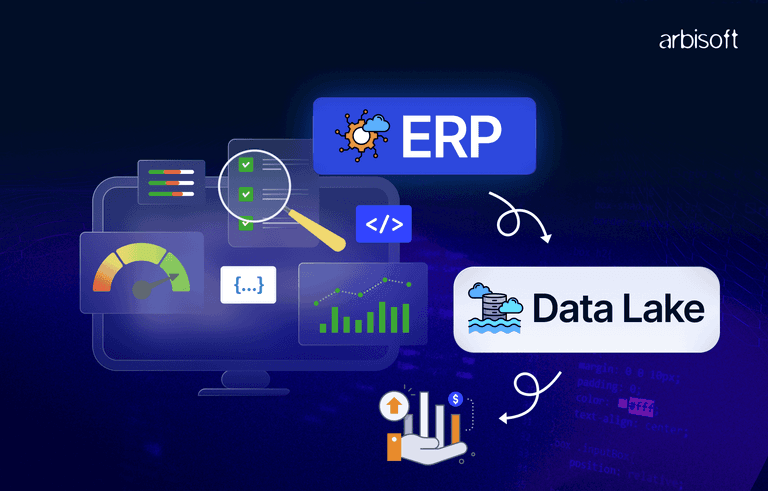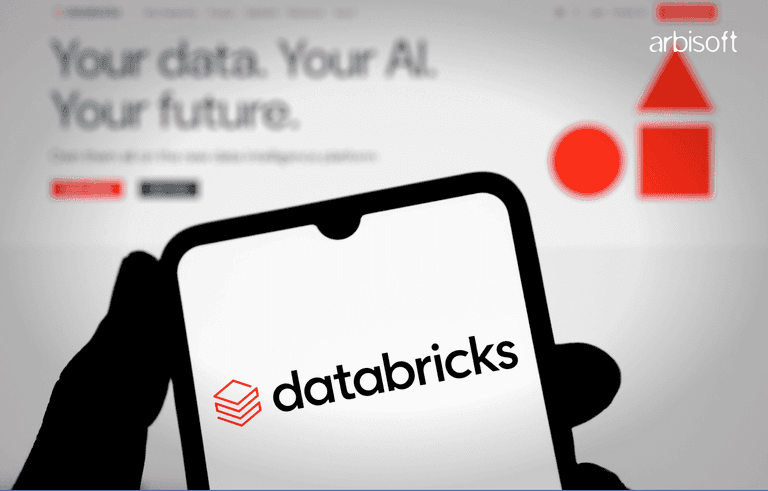We put excellence, value and quality above all - and it shows




A Technology Partnership That Goes Beyond Code

“Arbisoft has been my most trusted technology partner for now over 15 years. Arbisoft has very unique methods of recruiting and training, and the results demonstrate that. They have great teams, great positive attitudes and great communication.”
A Closer Look at Retrieval Augmented Generation & Its Challenges

A recent study by Stanford University revealed that RAG models can outperform traditional methods on question-answering tasks by a staggering 20%. This isn't a one-off success either. RAG is making waves across various NLP applications. This powerful technique merges information retrieval with text generation, enabling the creation of human-quality, informative text.
This blog post will equip you to understand why and how that happens. By the end of this blog, you might uncover the challenges it still faces and the obstacles hindering its widespread adoption.
Retrieval Augmented Generation - The Powerhouse
At its core, RAG bridges the gap between finding relevant information and using it to generate comprehensive text. Retrieval Augmented Generation (RAG) combines information retrieval with text generation. It enhances Large Language Models by providing relevant context from external data sources and improving accuracy.
Here's a basic breakdown.
Retrieval Augmented Generation (RAG) is a powerful tool that combines the best of both worlds - search and generation. Think of it as a supercharged research assistant. RAG starts by scouring vast amounts of text – like articles, books, and websites – to find information relevant to a specific query. This is the "retrieval" part.
Once it has gathered the most pertinent and up-to-date information, RAG's generative abilities kick in. It processes this information and produces new text formats, such as summaries, explanations, or even creative writing pieces. This "generation" phase transforms raw data into valuable insights or engaging content. This could be anything from a concise summary of an article to a well-structured answer to a question.
There are different ways RAG can combine the retrieved information with the generative model, but a popular approach is to simply put them together and let the model analyze everything at once - the encoder-decoder. This allows the model to understand the context of the information and use it to create a high-quality response.
RAG in Action - Transforming NLP Tasks
RAG isn’t confined to theory - it is actively transforming various NLP tasks:
1. Question Answering
Suppose you ask a factual question like "How many moons Jupiter has?". RAG can swiftly retrieve relevant documents, such as Wikipedia articles or different reports using advanced techniques like dense retrieval. By leveraging these documents, RAG constructs precise and informative answers, significantly surpassing traditional methods in accuracy, as demonstrated in a 2020 study by Facebook AI on challenging datasets.
2. Text Summarization
RAG can excel at summarizing lengthy documents. By retrieving relevant snippets and feeding them to the generative model, RAG can produce concise summaries that capture the essence of the original text. A 2021 study by Google AI showed that RAG models achieved state-of-the-art performance on text summarization benchmarks [2].
3. Dialogue Systems
By retrieving relevant information based on user queries using attention mechanisms in language models (focusing on important parts of retrieved documents), RAG enables chatbots to provide informative and contextually-aware responses, as demonstrated by the ai chatbot solution for ecommerce.
4. Machine Translation
Faced with a foreign language document crucial for your business deal? RAG-powered translation systems can bridge the language gap while preserving the meaning and context of the text. This is particularly helpful for translating complex documents or creative content that requires nuance.
5. Fact-Checking and Misinformation Detection
With the amount of information online, distinguishing fact from fiction is more important than ever. RAG can be fine-tuned to analyze information retrieved from various sources and flag inconsistencies or potential biases. This can empower users to make informed decisions based on accurate information and combat the spread of misinformation.
6. Creative Text Generation
Struggling with writer's block? RAG can help unlock your creativity. By providing RAG with prompts, themes, or existing works as input, you can generate fresh ideas, develop intricate storylines, or even compose poetry. This powerful tool fosters a new era of human-machine collaboration in creative writing.
7. Code Generation
RAG has the potential to revolutionize coding by assisting developers. By translating natural language descriptions of desired functionality into code snippets or even complete functions, RAG can dramatically boost developer productivity and make coding more accessible to a wider audience.
Challenge Your AI IQ!
Take the RAG Quiz and see if you are a RAG Rockstar!

Think you're AI-savvy?
Challenge yourself with the RAG Quiz and see your score!

RAG - Challenges and Limitations
While Retrieval-Augmented Generation (RAG) holds immense potential for revolutionizing NLP tasks, it is not without its challenges. Here are some key hurdles researchers are actively tackling.
1. Ineffective Document Ranking
The retrieval component, often touted as the "librarian" of RAG, can sometimes struggle to identify the most relevant documents. A 2022 study by the Allen Institute for Artificial Intelligence found that RAG models trained on traditional retrieval methods could be misled by factual inconsistencies or irrelevant information in retrieved documents, leading to inaccuracies in the generated text.
How to Address: Techniques like dense retrieval (using more intricate document representations) and ranking with attention mechanisms (focusing on crucial parts of documents) are being explored to improve retrieval accuracy and mitigate this challenge.
2. Bias in Retrieved Information
Biases inherent in the vast amount of text data used to train RAG models can inadvertently infiltrate the generated text. A 2021 study by MIT researchers revealed that RAG models trained on a general web crawl dataset exhibited biases in generated summaries, potentially reflecting societal prejudices present in the training data.
How to Address: Methods like debiasing techniques and incorporating fairness constraints into the retrieval process are being developed to mitigate bias and ensure the generated text remains objective and trustworthy.
3. Factual Inconsistencies
Retrieved documents themselves might contain factual errors. A 2020 study by Stanford University highlighted that RAG models were susceptible to factual inconsistencies in retrieved documents, potentially leading to the generation of misleading or inaccurate text.
How to Address: Strategies like incorporating fact-checking modules, leveraging external knowledge bases for verification, and utilizing automation testing services are being investigated to equip RAG with the ability to discern factual information and ensure the generated text is reliable.
4. Explainability Challenge
Understanding how RAG models arrive at their final outputs can be challenging. This lack of explainability makes it difficult to identify the root cause of errors or biases in the generated text.
How to Address: Researchers are actively exploring techniques (a few discussed below) to make RAG more interpretable, allowing for better debugging and ensuring responsible use of the technology.
5. Balancing Power with Efficiency
Training and running RAG models demands substantial computational resources due to the intricate nature of combining information retrieval and language generation processes. This high computational cost presents challenges in terms of both time and financial investment, requiring careful consideration of hardware, software optimizations, and efficient model architectures.
How to Address: Researchers are actively exploring methods to optimize RAG architectures and harness the power of emerging hardware technologies. By enhancing efficiency and reducing computational demands, the goal is to democratize access to RAG capabilities and accelerate its integration into various applications.
Advancements and Future Directions
RAG research is a hotbed of innovation, and here are some exciting developments. The researchers are actively working on the following:
- Bias detection methods to identify and remove biases from retrieved documents. This ensures fairer and more trustworthy generated text.
- Factual verification techniques to assess the accuracy of retrieved information. This involves leveraging external knowledge bases or integrating fact-checking modules into the RAG pipeline.
- Improved integration of retrieval and generation through novel architectures. These architectures aim to create a more seamless flow of information between the retrieved documents and the generated text, leading to more coherent and informative outputs.
New RAG architectures are being developed to address specific challenges. For instance, some architectures focus on:
- Modeling relationships between retrieved documents to better understand the overall context and generate more cohesive text.
- Conditioning the generation process based on the retrieved documents' credibility to prioritize factual information and minimize the impact of potential biases.
Potential Applications of RAG
The potential applications of RAG are vast and constantly evolving. Here are some glimpses into the exciting possibilities on the horizon.
- They hold the ability to adapt intelligent tutoring systems that leverage RAG to tailor their explanations and examples to individual student needs by retrieving relevant educational material.
- RAG-powered chatbots are close to providing more nuanced and informative responses to customer inquiries, drawing upon a vast knowledge base to deliver exceptional service.
- RAG could revolutionize search engines by not just providing links but also generating summaries or explanations tailored to the user's specific search intent.
The Power of Retrieval Augmented Generation
RAG represents a significant leap forward in NLP, enabling the creation of human-quality, informative text. By combining information retrieval with powerful generation techniques, RAG has the potential to revolutionize various applications. While challenges remain, ongoing research efforts are paving the way for more robust and trustworthy RAG models. As RAG continues to evolve, we can expect it to play an increasingly important role in shaping the future of NLP and how we interact with information.








